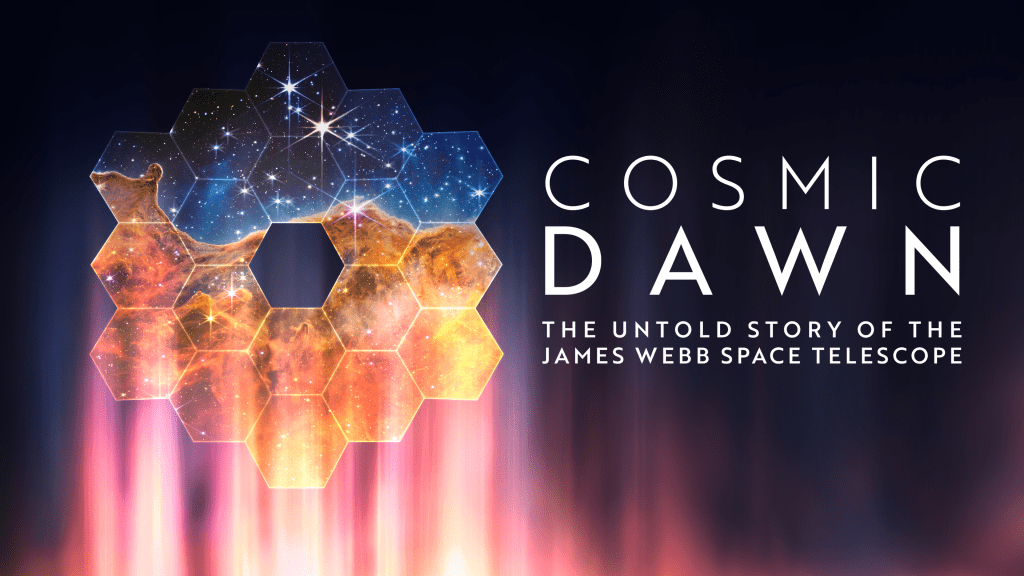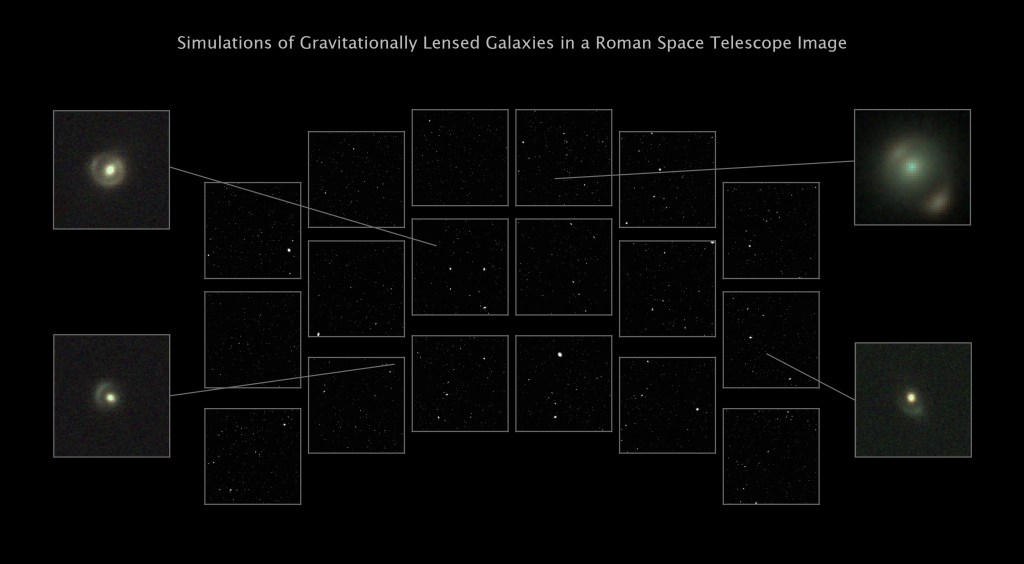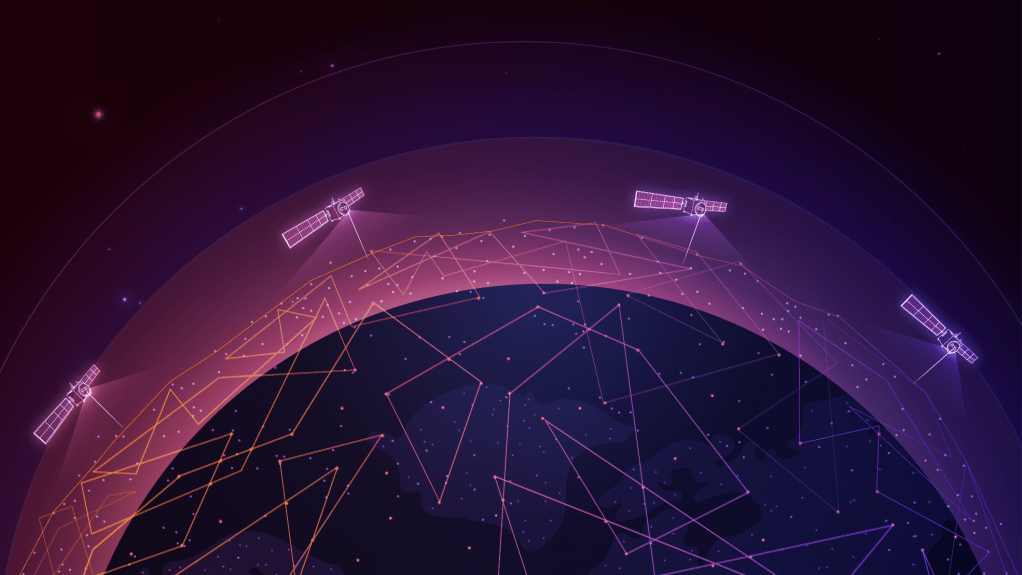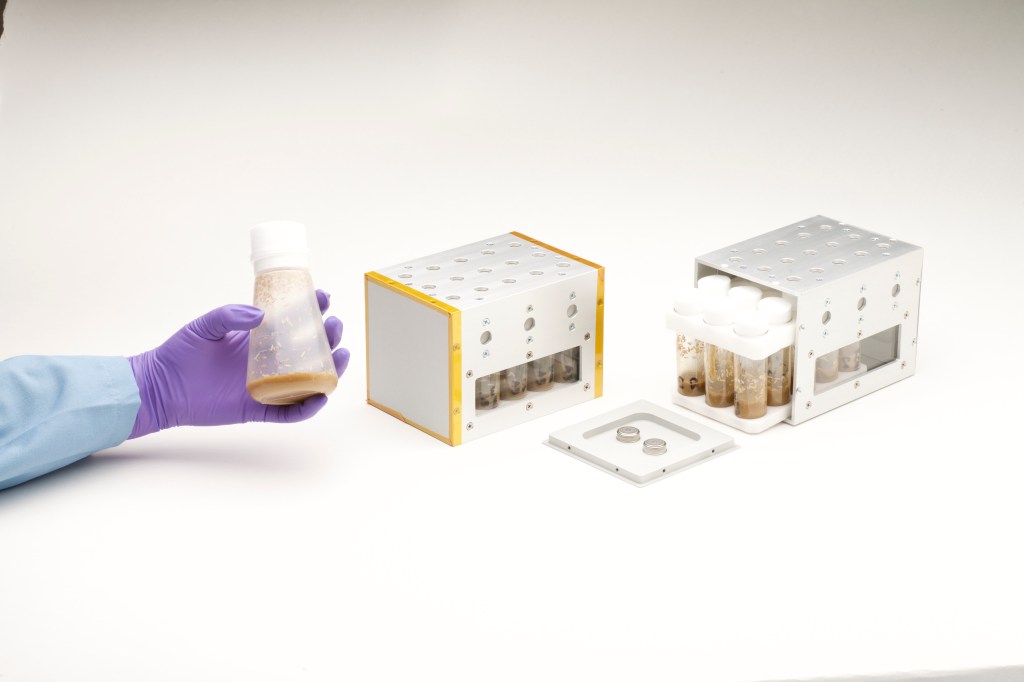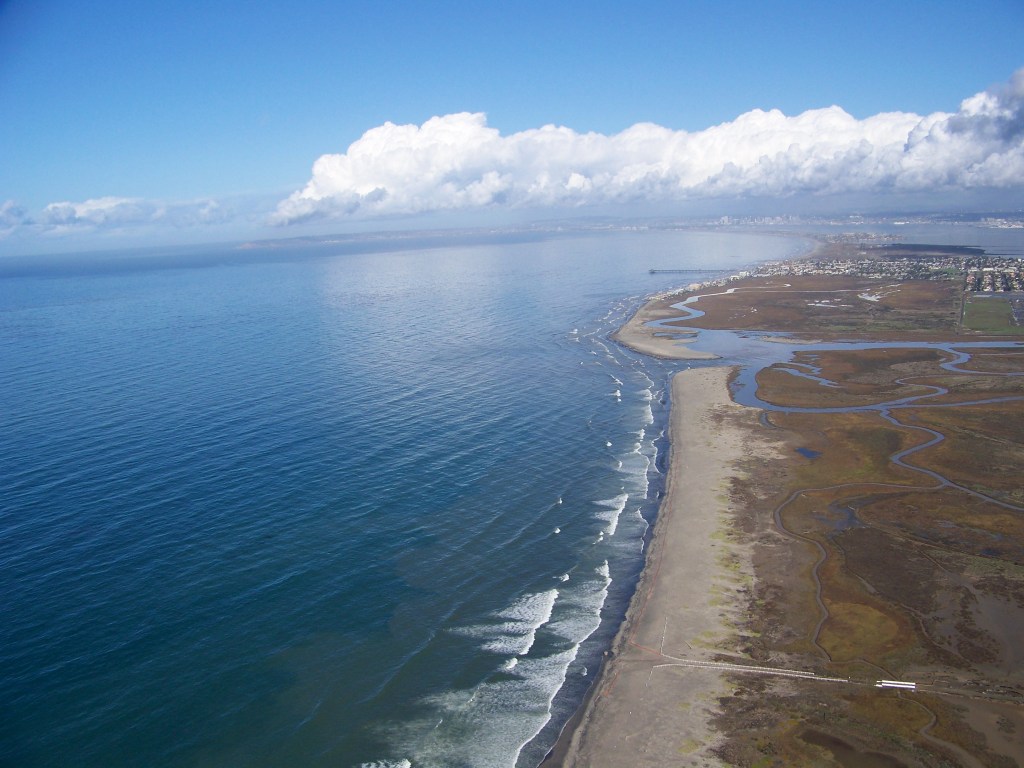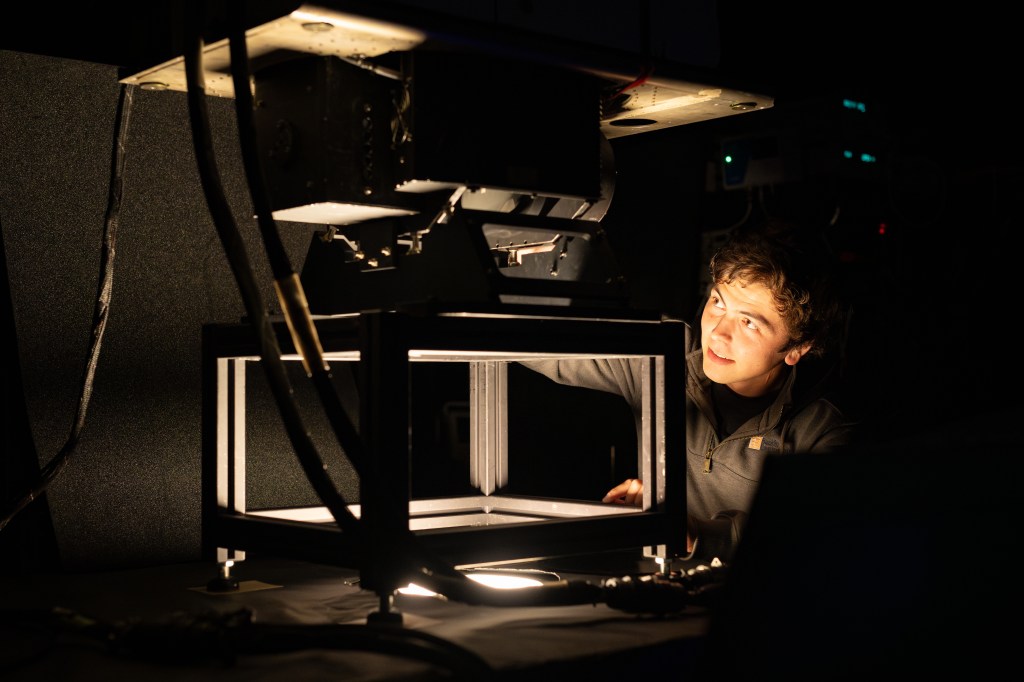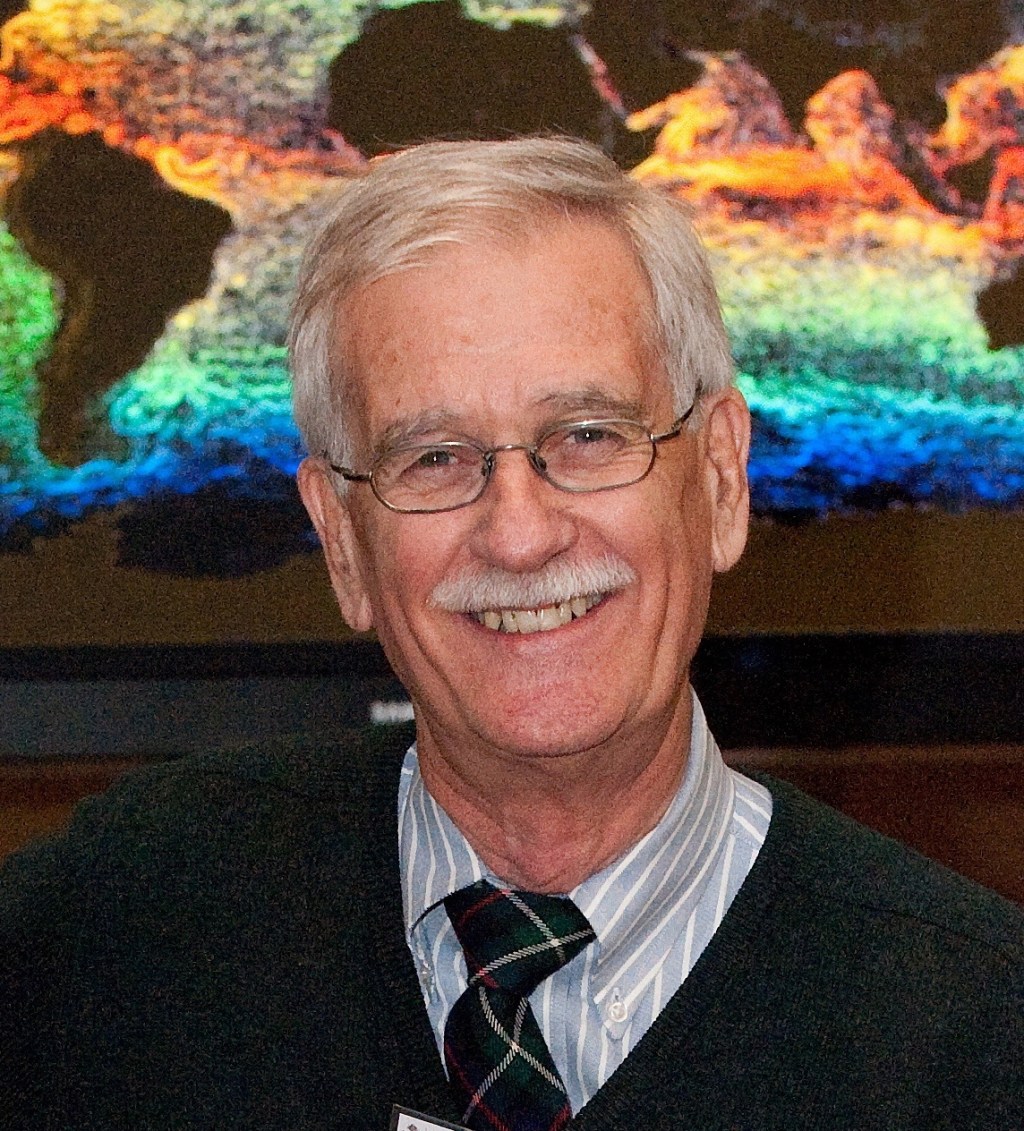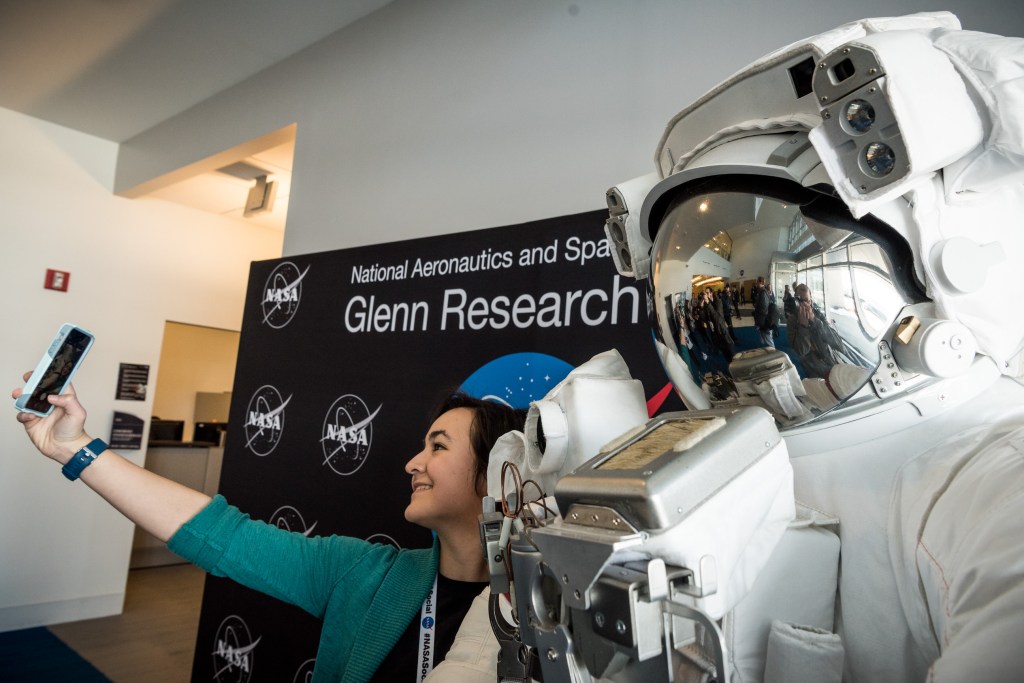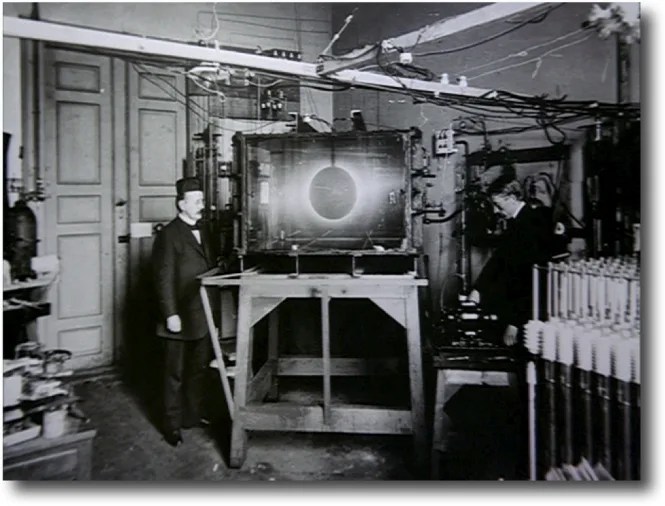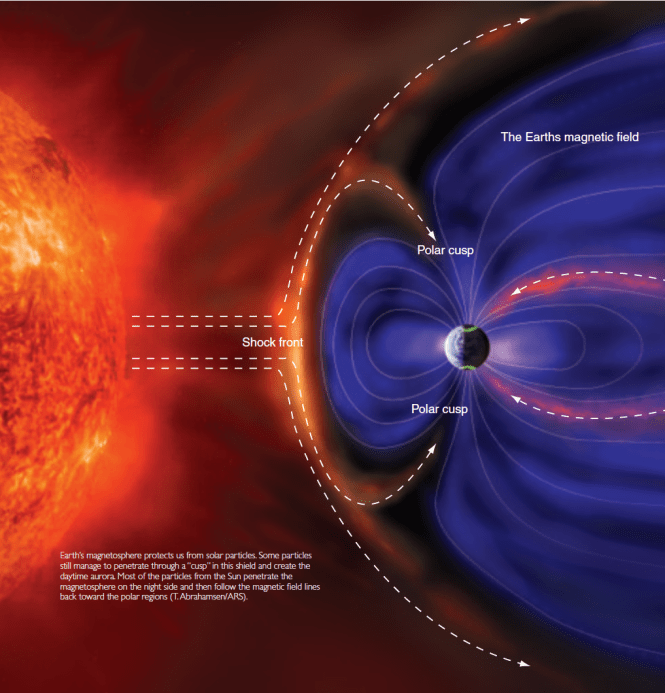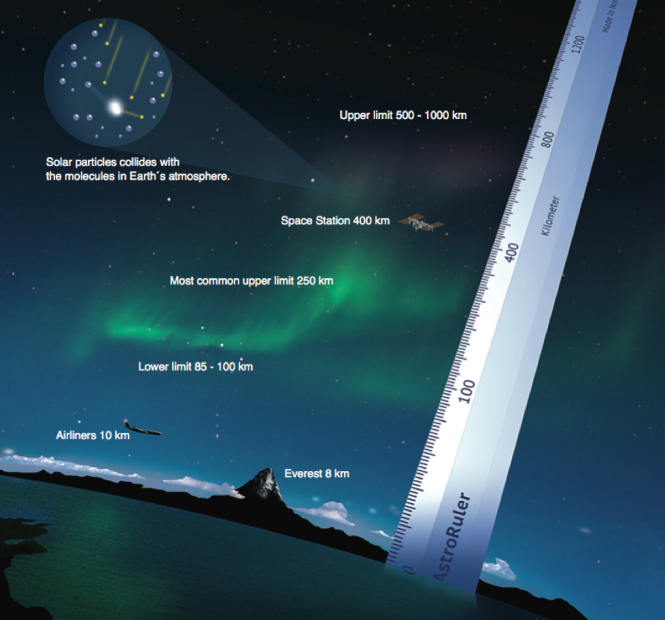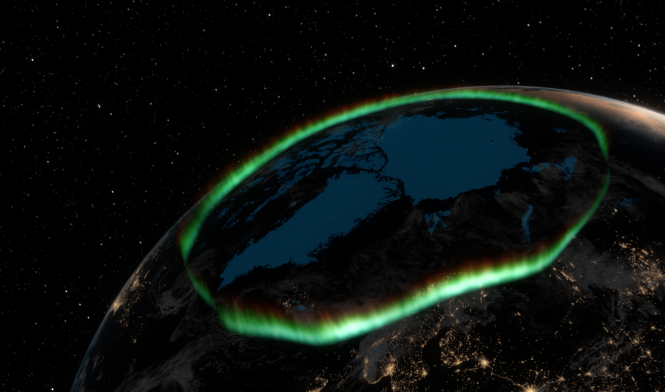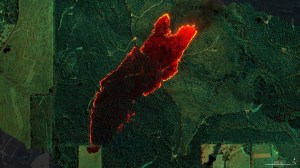For thousands of years people in the northern part of the world have marveled at the spectacular and fearful displays that occasionally light up the night sky. The Norwegian scientist Kristian Birkeland, 1867-1917 was the first explain the real cause – that particles from the Sun were sparking the Northern Lights. To prove his theory—which is still valid today–he built his own small world in a glass box, electrified his model of Earth with its own magnetic field and showed how particles from the Sun could ignite auroras. The particles were captured by the Earth’s magnetic field and channeled down toward the Polar Regions.
The Northern Lights mechanism
When particles and magnetic fields from the Sun reach Earth, something strange happens. It’s as if they are deflected by an invisible shield – the Earth’s magnetic field – called the magnetosphere.
The two magnetic fields couple together and disturb the magnetosphere. Some particles manage to enter the magnetosphere and will be guided along the magnetic field lines toward the Polar Regions of the Earth. Eventually they collide with atoms in the Earth’s atmosphere.
These collisions usually take place 80–300 km above ground. Here they cause oxygen and nitrogen to become excited and to emit light in much the same way as fluorescent lights or in advertising neon signs. The result is a dazzling dance of green, blue, white, and red light in the sky forming in a ring-shaped area called the aurora oval.
Modern Science
The science of Heliophysics improves our understanding of the Sun and its interactions with the Earth and solar system. Today we study the Northern Lights from ground-based instrumentation, sounding rockets, and satellites. A large number of other all-sky cameras and instruments are situated in many northern countries to study the Northern Lights. This includes incoherent scatter radars such as the large EISCAT antennas at Svalbard. Co-located is the new Kjell Henriksen Observatory that was opened in 2008 and is the largest of its kind, with 30 instrument rooms with domes. Here, scientists around the world can remotely operate their instruments from their home institution. What makes Svalbard special is that it is located right under the magnetic cusp where particles from the solar wind can enter directly into Earth’s atmosphere and create the daytime aurora.
Using rockets launched from Fairbanks, Alaska in the United States of America, and Andøya or Svalbard in Norway, one can spear through the aurora and actually measure its physical properties. Satellites provide a global view and have given us a lot of new knowledge about the Northern Lights and the interaction between the solar wind, the magnetosphere, and the atmosphere. NASA maintains a fleet of solar, geospace, and heliospheric spacecraft as a distributed observatory to study these interactions and the complex system that makes up our space environment. Missions such as the Solar Terrestrial Relations Observatory (STEREO), the joint ESA/NASA Solar and Heliospheric Observatory (SOHO), the joint ESA/NASA Cluster, and NASA’s Time History of Events and Macroscale Interactions during Substorms (THEMIS) all have provided insight on the dynamic processes that cause the Northern Lights.
How to predict the Northern Lights
NASA’s Solar Dynamics Observatory (SDO), SOHO, and several other satellites are observing the Sun 24 hours a day and scientists can detect eruptions on the Sun that will produce strong Northern Lights. By monitoring the activity on the Sun every day and by measuring the speed of the solar wind outside Earth’s magnetosphere using NASA’s Advanced Composition Explorer (ACE) spacecraft, scientists can predict the strength and the location of the aurora. See aurora forecast here.
More Information
“The Northern Lights – a Guide”, P. Brekke and F. Broms, (2014, Press Forlag)
“The Northern Lights – a Magic Experience”, P. Brekke and F. Broms, (2015, SOLARMAX)
Trailer of the Northern Lights documentary: https://vimeo.com/87472898
Pål Brekke is currently a Senior Advisor at the Norwegian Space Centre. In 1999 he joined the European Space Agency (ESA) as the SOHO Deputy Project Scientist and was stationed at NASA’s Goddard Space Flight Center in Greenbelt, MD. At NASA, he was the lead for outreach and media activities and was instrumental in making SOHO a well-known mission and for disseminating SOHO images and science results world-wide.
He received a PhD in 1993 from the Institute of Theoretical Astrophysics, University of Oslo. His work focused on the ultraviolet (UV) emissions from the Sun observed with instruments on sounding rockets and the space shuttle Challenger. Dr. Bekke is a Norwegian delegate to the ESA Science Programme Board, ESA Space Situational Awareness (SSA) and a delegate to the International Living With a Star program. He is also a Prof. II at the University Center at Svalbard (UNIS).
Dr. Brekke is also an author of several popular science books – including “Our Explosive Star” (Springer 2012) and “Northern Lights – a Guide” (Press Forlag 2013). He has also produced film documentaries about the Northern Lights – the latest award winning «The Northern Lights – a Magic Experience (2015) which is also available in eight languages on DVD.

